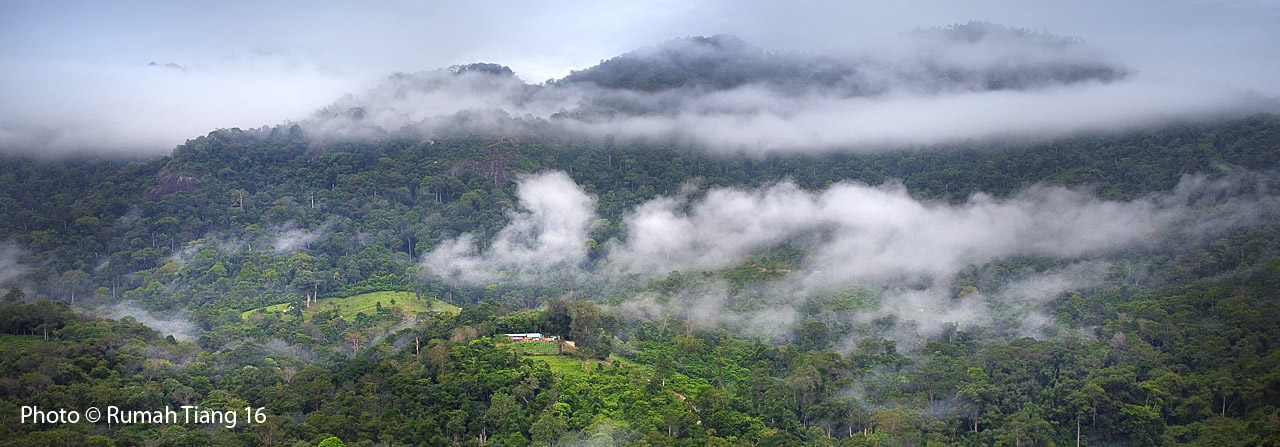Intriguing Caves to Explore

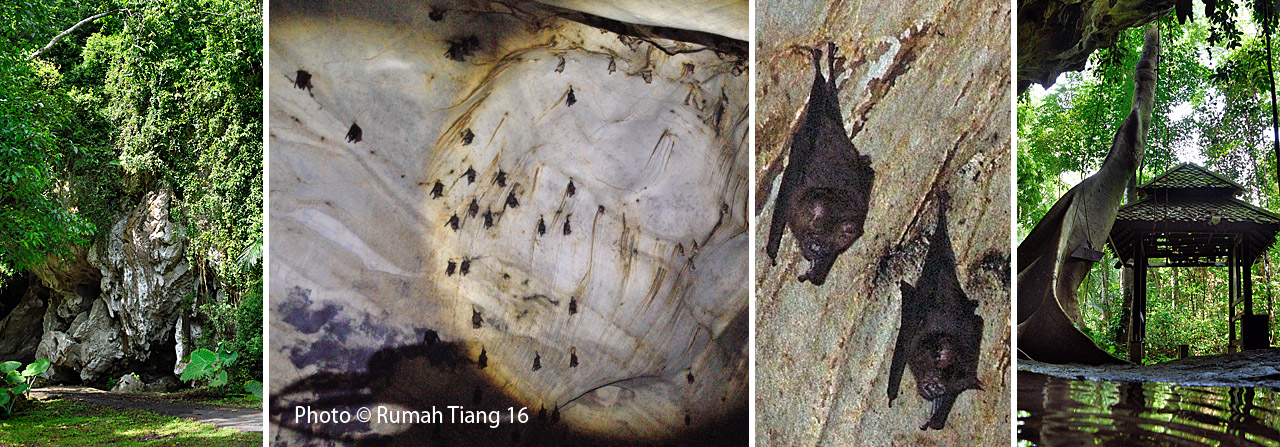
Gua Gunung Runtuh, home of Perak Man
This was the home of the 11,000-year-old Perak Man. In 1991, his skeletal remains – in a foetal position – were unearthed from an elaborate burial site in the cave. The manner in which the Perak Man, the region’s best-preserved Paleolithic skeleton, was buried indicated that he was greatly respected.
Thorough research also revealed that he was the only one found with a rare genetic disorder, Brachymesophalangia type A2. In spite of his obvious deformity, his longevity suggested that he must had played an important role in the community, most probably as a shaman.
With the discovery of the Perak Man, visiting this cave is a must. Gua Gunung Runtuh is located at Bukit Kepala Gajah, one of eight limestone caves in Lenggong Valley.
Gua Badak
Following its collapse, the “rhinocerous” cave left some rock face revealing petroglyphs, not the work of the early man but by aboriginal orang asli. In all likelihood, they used caves such as this as shelters during their nomadic migrations.
Gua Harimau
The cave (tiger cave) derived its name when a tiger was spotted resting there. Eleven skeletons, pots and bronze tools were found in the cave in the 1980s and 90s, the tools proof of the existence of an early Bronze Age in Malaysia. The discovered bones and stone tools are currently exhibited at the Lenggong Valley Archaeological Museum.
Gua Ngaum
This is a small but intriguing cave, containing food deposits, stone tools and broken earthernware of early dwellers. “Ngaum” replicated the roar of a “clouded” leopard which leapt from the cave. The cave has delicate wave lines on its facade. It could have been in use 7,000 to 6,000 years ago.
Gua Ngaum is located at the Bukit Kepala Gajah limestone complex, latitude 5° 07.46’ north and longitude 100° 58.72’ east, 89 metres above sea level.
Gua Puteri
A huge cave – and possibly the most interesting after Gua Gunung Runtuh – Gua Puteri’s many rock formations, stalactites and stalagmites are a fascinating spectacle. Different shapes – a married couple, an elephant’s head, even a frog – appeared to have been formed, giving rise to legends such as that of the curse of Sang Kelembai.
Gua Puteri is in fact a tunnel without archaeological findings. A huge rock pillar resembling the shape of a seated woman (princess?) gives the cave its regal name.
Gua Puteri is located at the Bukit Kepala Gajah limestone complex (5° 07.56’ N, 100° 58.80’ E), 94 metres above sea level.
Gua Kajang
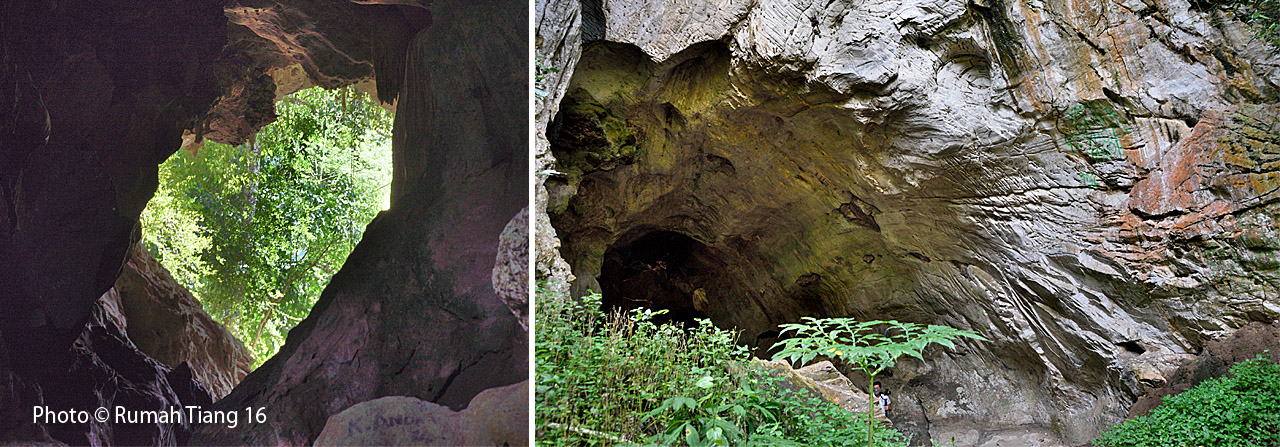
The first cave to be excavated by Ivor HN Evans in 1917, it revealed urn fragments, stone tools, food deposits and human bones, all evidence of human life 11,000 to 5,000 years ago. It appeared to be the living quarters and burial ground of the Paleolithics and Neolithics. Both a Paleolithic human frame and a Neolithic grave have been unearthed in this cave. There are also unique cave formations, tunnels as well as stalactites and stalagmites.
Gua Kajang is located at a limestone complex at Bukit Kepala Gajah (5° 07.57’ N, 100° 58.87’ E), 76 metres above sea level.
Gua Asar
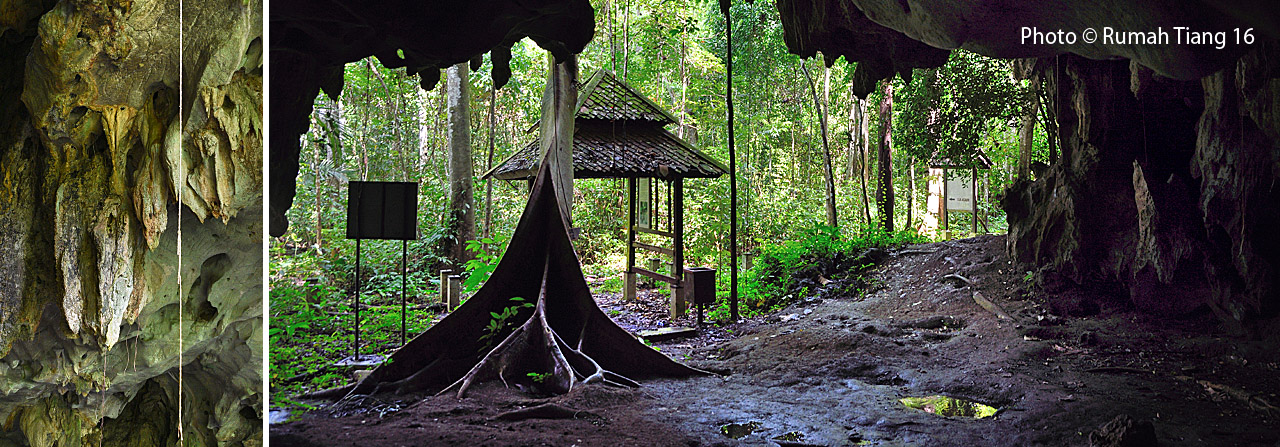
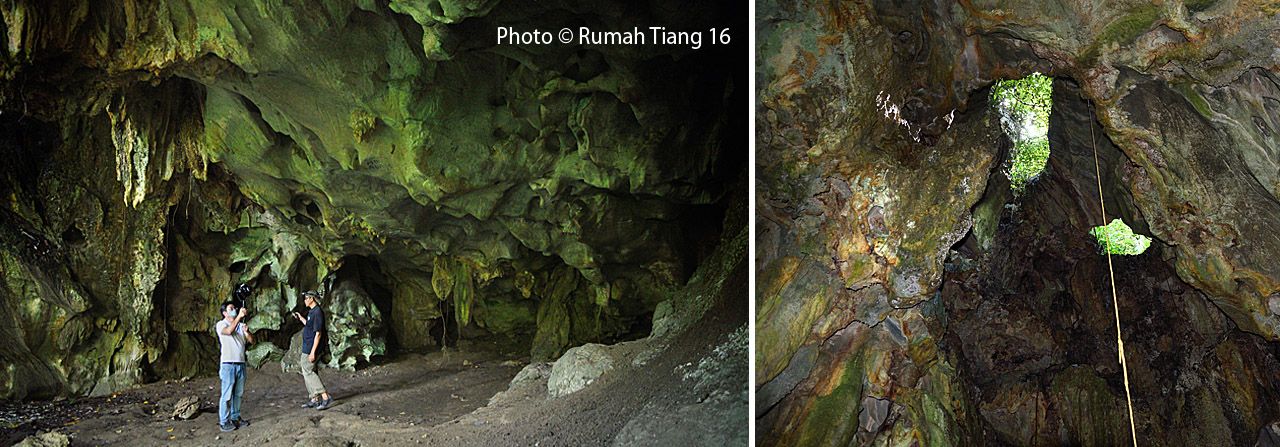
This cave has not, as yet, been researched archaeologically. Its name was given because it was located during the call for prayers (Asr).
Gua Asar is located at the Kepala Gajah limestone complex (5° 07.53’ N, 100° 58.82’ E), 78 metres above sea level.
Gua Teluk Kelawar
There is evidence that this cave was used 11,000 to 6,000 years ago from the discovery of stone tools, food deposits (such as river snails, Brotia costula and Brotia spinosa) and animal bones. Human remains and burial sites dating 8,000 years indicated that the Paleolithic age in Malaysia in the region continued until the early Holocene era before the Neolithic arrival.
In 2004, a human remain aged 8,000 years ago, named Perak Woman, was found at Gua Teluk Kelawar. She was 148 centimetres tall and was believed to have been 40 years old when she was buried.
Gua Teluk Kelawar is located at the Bukit Kepala Gajah limestone complex (5° 07.44’ N, 100° 58.60’ E), 76 metres above sea level.
___________________________
Note: There are over 60 known caves around Lenggong but only 13 are protected in some way. To visit these caves, contact the Lenggong Archaeological Museum (daily 9:00 am – 6:00 pm; T: +605-767 9700) in Kota Tampan, 9 km from Lenggong town, to book your visit. The protected cave entrances are gated and locked.

